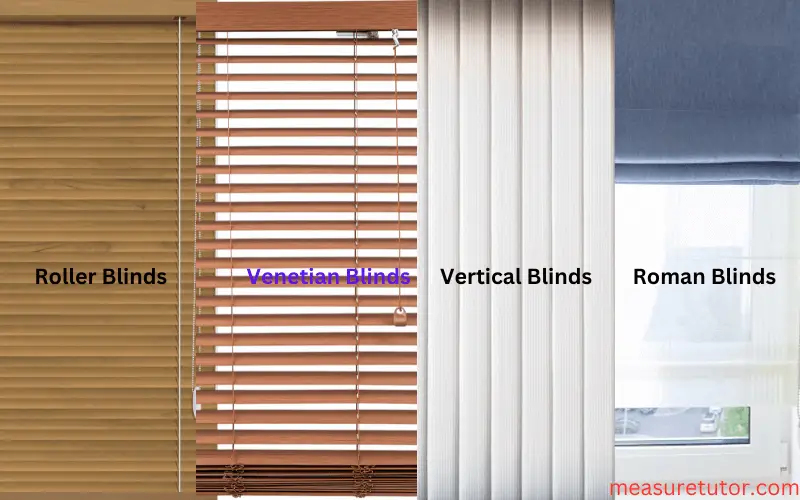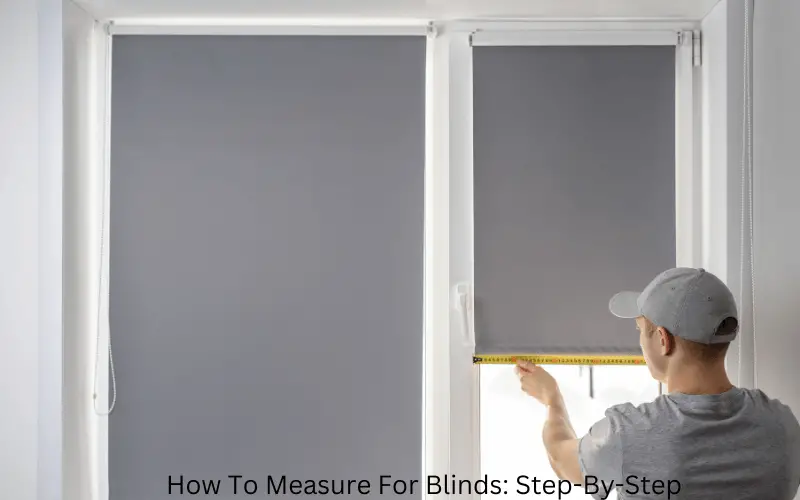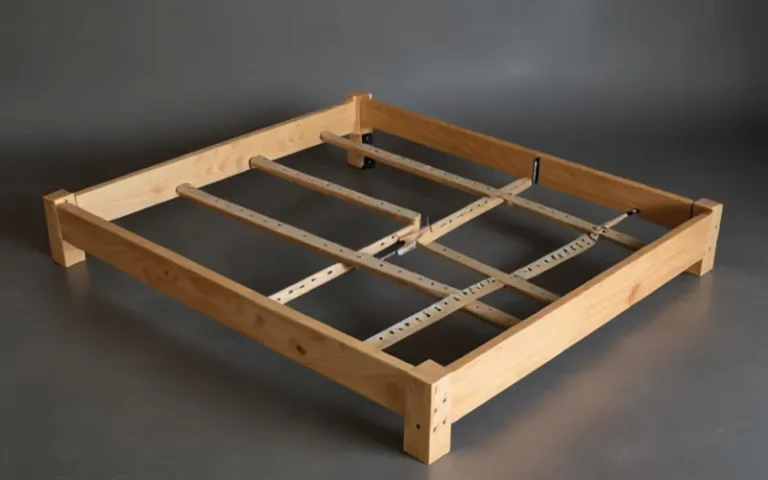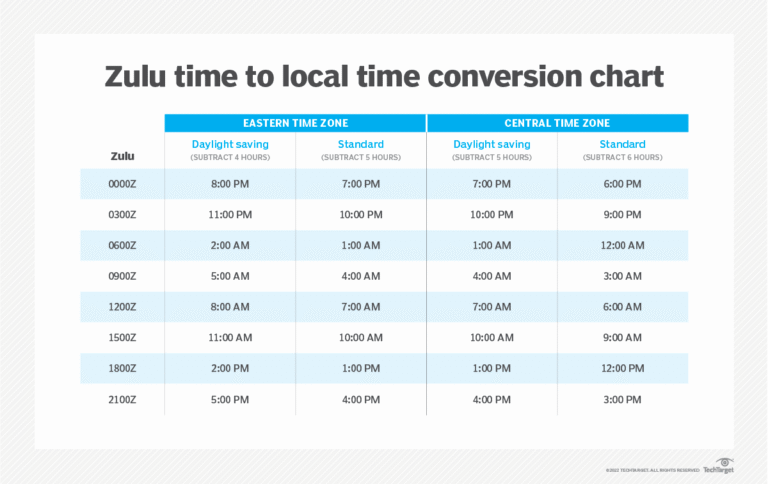How to Measure for Blinds: Complete Guide
Measuring your windows for blinds is a quick and easy task that can transform the look of any room. With accurate measurements, you can ensure a perfect fit for your custom blinds, enhancing both the style and functionality of your space. Well-fitted blinds not only provide privacy and light control but also add a touch of elegance to your home.
To begin, you’ll need a few simple tools and a bit of time. Taking precise measurements of your windows is the key to achieving the perfect fit. Follow these easy steps to get the exact measurements you need for beautiful, custom window treatments. With these measurements in hand, you’ll be ready to choose the perfect blinds.
Different Types Of Window Blinds

- Roller Blinds: Roller blinds are a simple and versatile option that can be easily customized to suit any window size or shape.
- Venetian Blinds: Venetian blinds are a popular choice due to their ability to control light and privacy.
- Vertical Blinds: Vertical blinds are an excellent option for large windows or sliding glass doors.
- Roman Blinds: Roman blinds add a touch of elegance to any room.
How To Measure For Blinds: Step-By-Step

Required Tools For Blinds Measurement
You’ll need a few basic tools to measure for blinds:
- A steel measuring tape (for accuracy)
- A pencil and paper (to jot down measurements)
- A step stool or ladder (if windows are high)
Decide Your Blinds Mounting Type

Before measuring, decide whether you want an inside mount or an outside mount.
- Inside Mount: The blinds are installed inside the window frame, offering a sleek and clean look. This option requires precise measurements to fit snugly within the window.
- Outside Mount: The blinds are installed outside the window frame, covering a larger area. This mount type is more forgiving with measurements and can make windows look bigger.
Measure for Inside Mount Blinds
If you choose an inside mount, follow these steps:
-
Measure the Width: Measure the width of the window at three points—top, middle, and bottom. Use the narrowest measurement as your width. This ensures the blinds will fit properly without hitting the window frame.
-
Measure the Height: Measure the height of the window in three places—left, center, and right. Use the longest measurement as your height to ensure full coverage.
-
Check the Depth: Measure the window frame’s depth to make sure it’s deep enough to accommodate the blinds. Most blinds require a minimum depth for an inside mount.
Measure for Outside Mount Blinds
If you prefer an outside mount, follow these steps:
-
Measure the Width: Measure the width of the area you want the blinds to cover. Typically, this should extend beyond the window frame by 2 to 3 inches on each side. This ensures better light control and privacy.
-
Measure the Height: Measure from the top of the window frame to where you want the blinds to end. Add a few extra inches above and below the window for better coverage and a more finished look.
Double-Check Your Measurements
Double-checking your measurements is a crucial step when preparing to order blinds. It ensures you have the correct numbers to get the perfect fit. Even a small mistake can cause big problems. If your measurements are off, your blinds might not fit properly. They could be too short, too long, too wide, or too narrow.
Incorrectly measured blinds can leave gaps that let light in or don’t provide the privacy you need. If your blinds are too wide, they won’t fit inside the window frame. If they are too narrow, you might see gaps on the sides, reducing their effectiveness and ruining the look. You may have to reorder or return them, which costs time and money. Some custom blinds are non-refundable, meaning you’ll have to purchase new ones altogether.
Adjustments For Unique Window Shapes

Measuring for blinds can be tricky when dealing with unique window shapes. To ensure a proper fit, it’s important to take accurate measurements of the window frame and consider any irregularities or obstructions that may affect the installation.
Bay Windows:
To measure for a bay window, start by measuring each section of the window individually. Measure the width and height of each section and note down the measurements. Then, add an additional 2-3 inches to the width of each section to allow for the blinds to overlap and provide maximum coverage.
Corner Windows:
Start measuring the width and height of each section of the window. Then, measure the angle of the corner and note down the measurement. Use a protractor to get an accurate angle measurement. Add an additional 2-3 inches to the width of each section to allow for the blinds to overlap and provide maximum coverage.
Arched Windows:
To measure for arched windows, start by measuring the width and height of the window at its widest and highest points. Then, measure the distance between the widest and highest points to get an accurate measurement of the arch. Use these measurements to find blinds that fit within the arch and provide maximum coverage.
Installation Insights
Preparing For Installation
- Measure window frame width and height precisely.
- Check if blinds fit inside or outside window frame.
- Inside mount: blinds fit inside frame for clean look.
- Outside mount: blinds cover entire frame for privacy.
Troubleshooting Common Issues
- Ensure brackets are level for proper blind alignment.
- Test opening and closing blinds for smooth operation.
- If blinds are crooked, adjust bracket positioning.
- If blinds don’t open/close smoothly, check for obstructions.

Credit: www.zoneinteriors.com.au
Frequently Asked Questions
How Can I Tell What Size Blinds I Need?
To determine the size of blinds you need, measure the width and length of your window. Use these measurements to select blinds that fit inside the window frame. Additionally, consider the type of mount you prefer, such as inside or outside mount.
How Much Smaller Should Blinds Be Than The Window Inside Mount?
Blinds for inside mount should be 0. 25 to 0. 5 inches narrower than the window. This ensures a proper fit and smooth operation.
How Do You Measure Inside Mount Blinds?
To measure inside mount blinds, start by measuring the width at the top, middle, and bottom of the window frame. Take the smallest measurement. Then, measure the height at the left, center, and right of the frame, and again, use the smallest measurement.
What Size Blinds For A 35 Inch Window?
For a 35 inch window, the best size for blinds would be 34 to 36 inches wide and 36 to 60 inches long. It is recommended to measure the window and choose the size accordingly. This will ensure a perfect fit for the window and provide optimal light control and privacy.
Conclusion
Conclusion
Learning how to measure for blinds doesn’t have to be complicated. By following these simple steps and taking accurate measurements, you can find the perfect blinds for your windows. The right blinds will enhance your room’s style, provide privacy, and control the light just the way you want. Take your time, measure carefully, and soon you’ll have beautiful blinds that fit perfectly and make your home feel complete!







